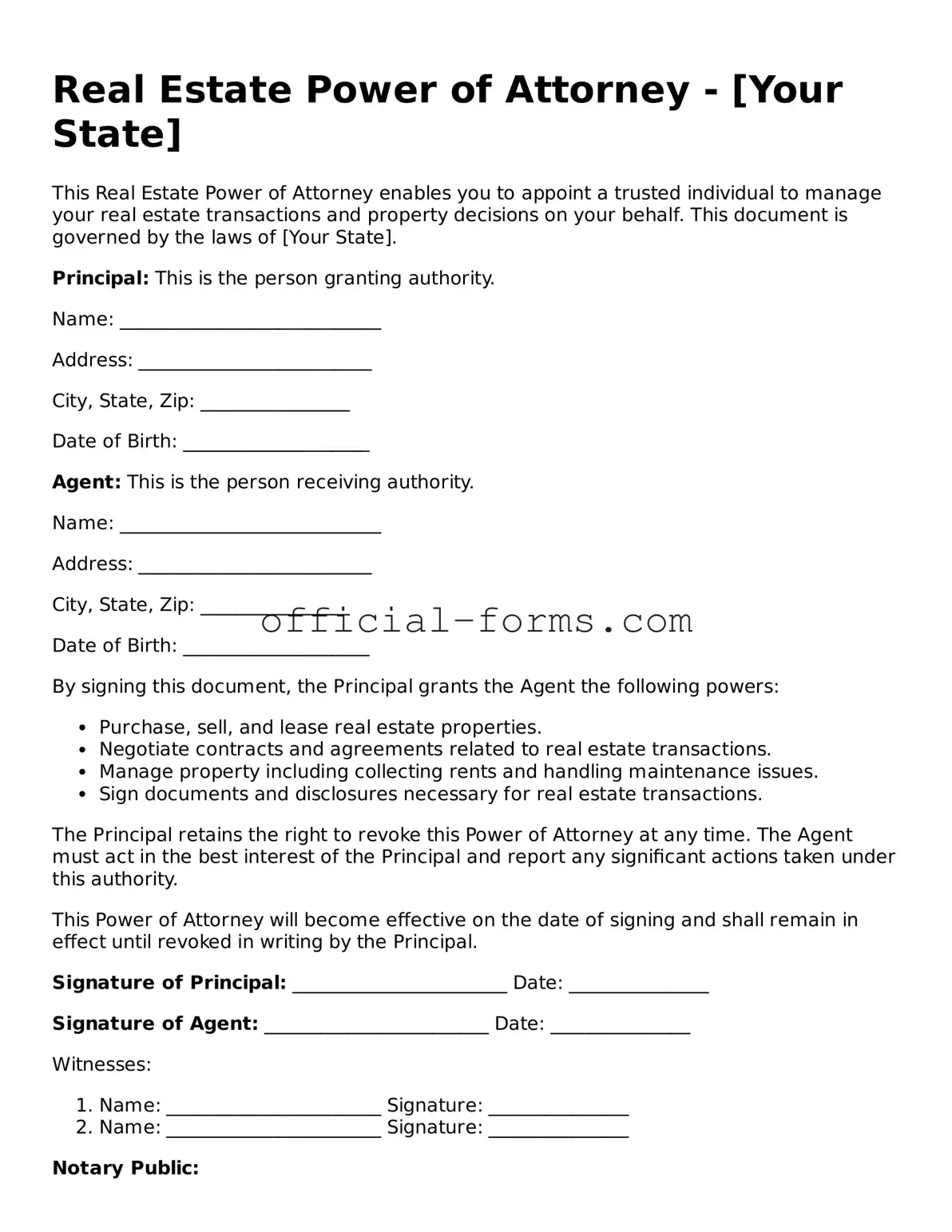Filling out a Real Estate Power of Attorney form can be a complex task. Many individuals make common mistakes that can lead to significant issues down the line. Understanding these pitfalls can help ensure that the document serves its intended purpose effectively.
One frequent mistake is failing to specify the powers granted. The form should clearly outline what the agent is authorized to do. Without this clarity, the agent may not have the authority to perform necessary actions, leading to confusion and potential legal disputes.
Another common error involves not including the correct names and details of both the principal and the agent. Accurate identification is crucial. Any discrepancies, such as misspellings or incorrect addresses, can invalidate the document.
Many people neglect to sign the form in the appropriate locations. Both the principal and the agent must provide their signatures, and in some cases, witnesses may also be required. Missing signatures can render the document ineffective.
Some individuals forget to date the form. A date is essential for establishing when the authority begins and can affect the validity of the powers granted. Omitting this detail can lead to complications regarding the timing of the agent's authority.
Inadequate understanding of the legal requirements in their state is another mistake. Each state has specific laws governing powers of attorney, and failing to comply with these regulations can result in the document being challenged or deemed invalid.
People often overlook the need for notarization. While not always required, having the document notarized can add an extra layer of authenticity and may be necessary for certain transactions. Neglecting this step can create hurdles in executing the powers granted.
Some individuals do not consider including a termination clause. This clause can specify when the power of attorney ends, providing clarity and protection for both parties. Without it, the authority may continue longer than intended.
Another mistake is not communicating with the agent about their responsibilities. It is vital to have an open discussion regarding the scope of authority and expectations. Failing to do so can lead to misunderstandings and conflicts later on.
Lastly, people sometimes forget to keep copies of the completed form. Retaining a copy is essential for both the principal and the agent. This ensures that both parties have access to the document and can refer to it as needed.
